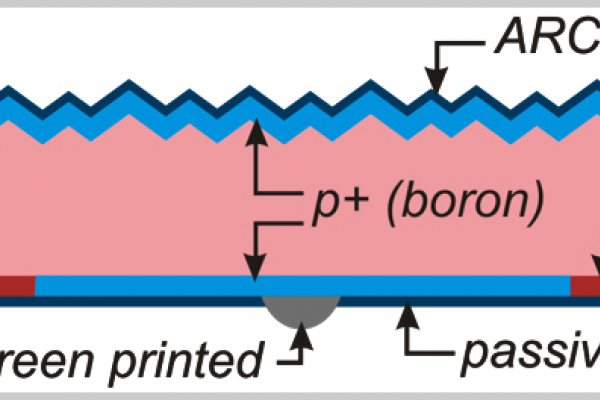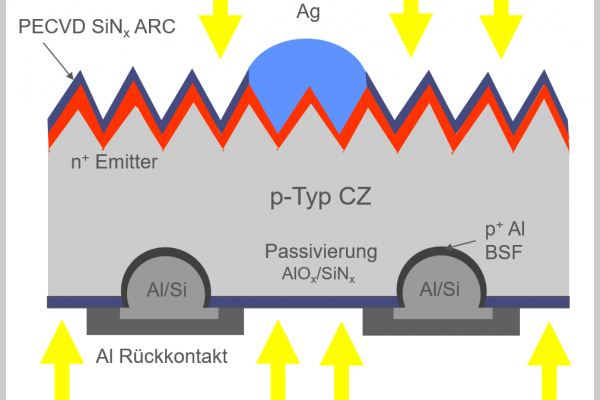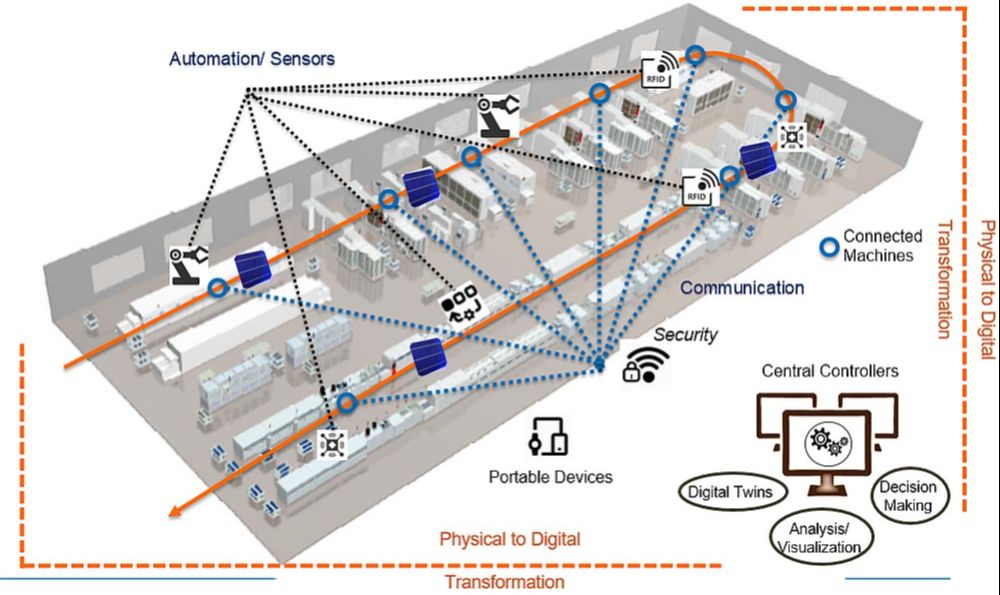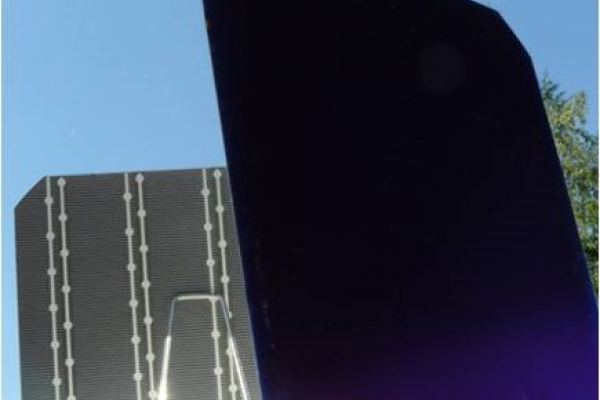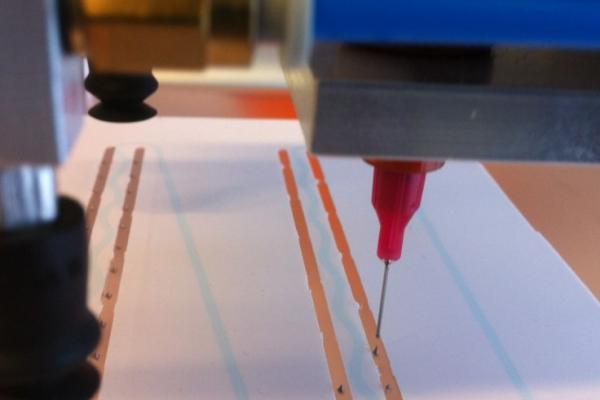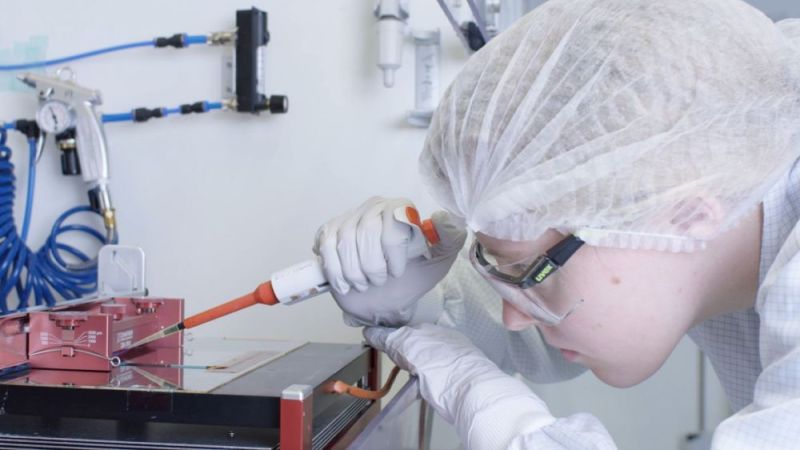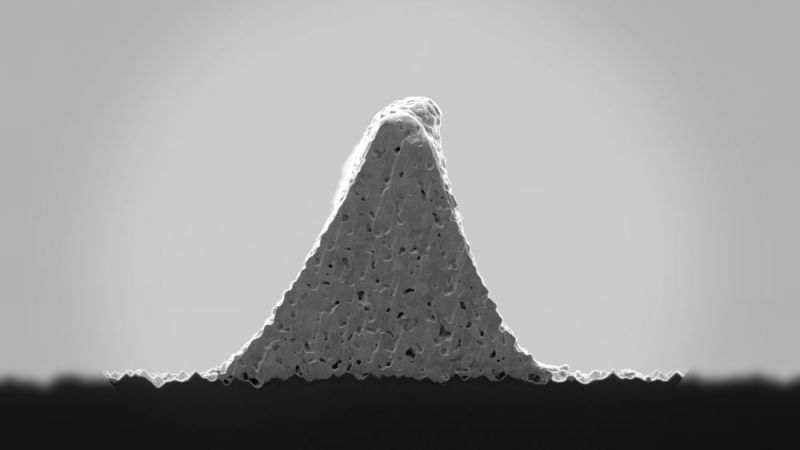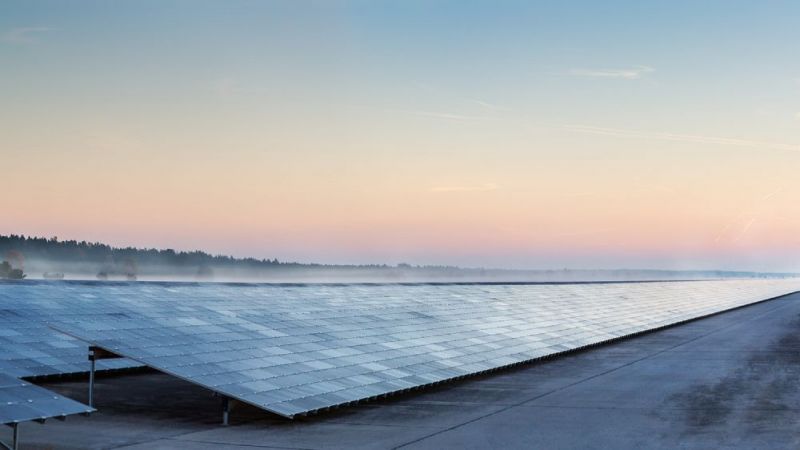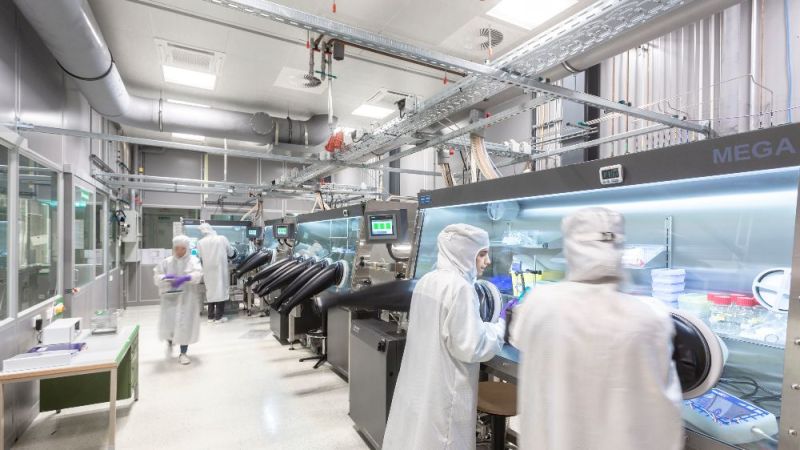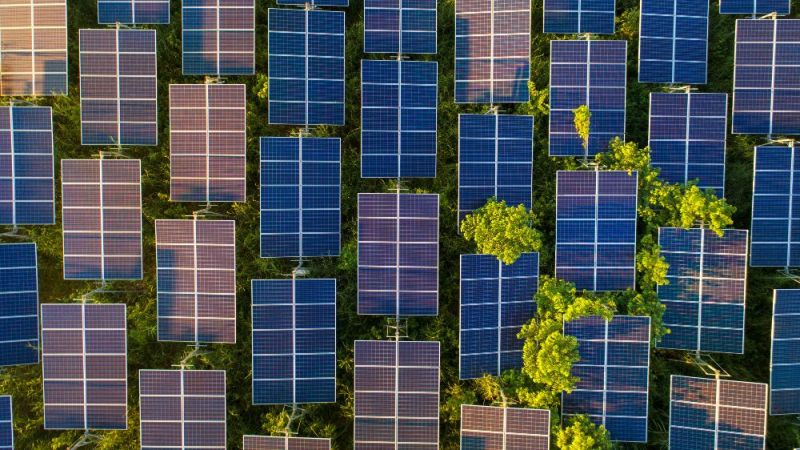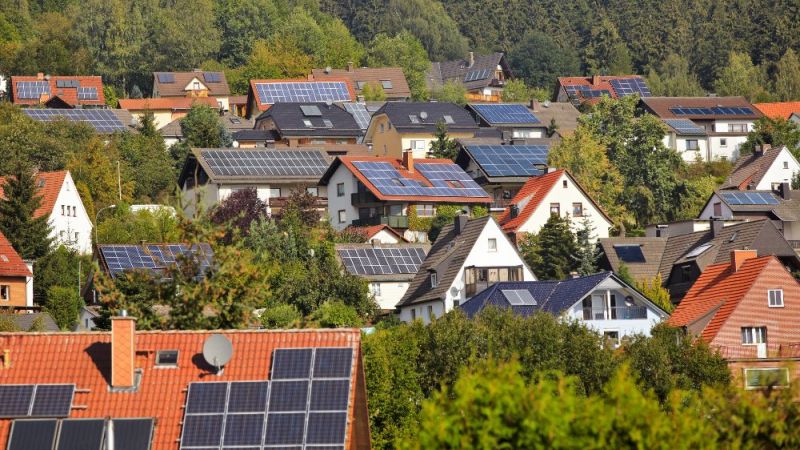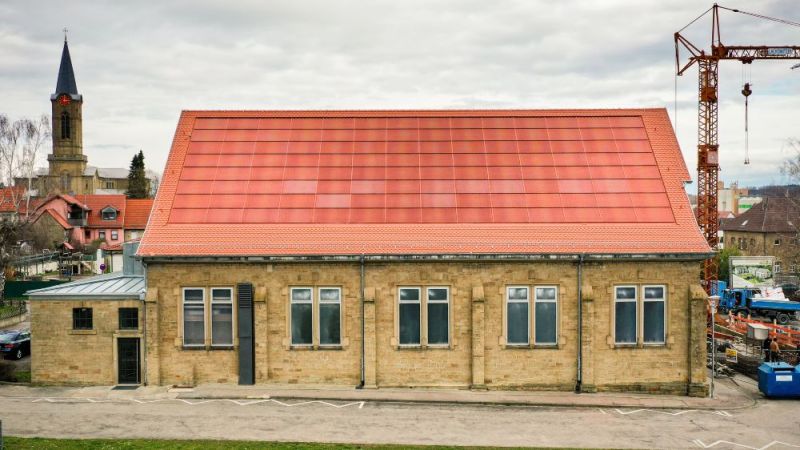Photovoltaics
Manufacturing different types of solar cells on a single production line
Being able to switch flexibly from the production of one type of solar cell to another concept - all on the same production line - is one of the aims of the FlexFab research project. More specifically, the research focuses on the parallel production of ZEBRA and PERC+ solar cells. To be able to produce different products on one line, the FlexFab concept relies on the use of Industry 4.0 technologies. Digitised manufacturing methods are being investigated, such as how wafers can find their way through the factory in an automated way. The project partners also succeeded in further developing the aforementioned cell concepts and manufacturing processes.
More flexibility to produce different types of solar cells
Production capacities for solar cells are almost non-existent in Europe. Around 90 per cent of global cell and module production is currently located in China and Southeast Asia. This concentration on the Asian market makes it difficult to manufacture and market advanced solar cell concepts in Europe. There is a lack of production lines to test new concepts. This is where the FlexFab research project comes in, short for "Flexible Production of Solar Cells in Future PV Factories". The investment in a new production line should no longer be tied to a specific cell concept. This makes it possible to test novel concepts without having to build new lines.
The project teams see a flexible production line as an opportunity to better market their bifacial cell concepts PERC+ (RCT Solutions) and ZEBRA (ISC Konstanz). These are solar cells that can use both direct solar radiation on the front side and indirect light, meaning light reflected from the area below, on the rear side to generate power. The investment risk for new technologies such as ZEBRA is thus reduced. The investor can always fall back on other silicon cell concepts such as the established PERC cell. "PERC" stands for monocrystalline Passivated Emitter and Rear Cell. ZEBRA cells belong to the group of interdigited back contact cells (IBC cells). The name ZEBRA is derived from the striped appearance of the rear side of the cell, created by the contacts. The active area of the front is free of shading contacts and the modules appear dark blue over the entire surface.
Industry 4.0: Intelligent solar cell production of the future
The FlexFab concept uses Industry 4.0 technologies to produce different cell types on one production line. The development of digitised photovoltaic factories requires a high degree of robot-assisted workflows. In addition, the entire production system must be fully networked. The physical world is linked to the digital world via sensors. It is conceivable that different wafers could find their way through the factory in an automated way. All parameters and measurements are easily accessible. This allows production to be optimised and times for maintenance work to be minimised. Wafers are mostly made of silicon and are the centrepiece of a crystalline silicon cell.
An important aspect of Industry 4.0 is the digital twin, a detailed copy of products, processes and systems on physical and statistical models. These record the current measurement values and operating states. The product can be manufactured, so to speak, before it is actually produced. The simulation can run numerous tests and put the future product through its paces.
The FlexFab is based on a production line for PERC cells, which in its usual version consists of nine pieces of equipment (equipment stations). Over the last few years, these cells have become the standard. They are cheap to produce, yet have a high efficiency and currently have the lowest electricity generation costs for ground-based plants. If the line is extended by three more pieces of equipment, production can be converted to ZEBRA cells. Compared to a production line for one cell type, the total investment is somewhat higher. However, costs can be saved by cleverly connecting and adapting the equipment. Depending on the needs of the market, production can switch between two cell types.
Software ibook supports the FlexFab concept
This new software enables different manufacturing routes through the factory. This allows different cell concepts to be controlled, monitored and manufactured in a single factory. The scientists are currently testing the system in the laboratory at the ISC Konstanz. For this purpose, they equipped individual plants with digital interfaces and coupled them to the developed software. Production and measured data can be monitored automatically and from different points of view.
Advantages and disadvantages of the solar cell concepts
The partners in the FlexFab project also further developed the PERC+ and ZEBRA technologies. These cells should also be suitable for flexible production. The ZEBRA cell is more efficient than PERC+ cells, but also more expensive to produce. The PERC+cell currently serves the large market for ground-based plants. The ZEBRA cell is suitable for buildings where the available space and appearance play an important role. These two cell concepts therefore serve two important markets for Europe.
Novel texturing significantly reduces reflection of PERC+ solar cells
The structure of the wafer surface significantly determines the level of the reflected solar rays. For this reason, the industry textures crystalline silicon wafers by specifically creating light-directing surface structures. Scientists within the FlexFab project investigated the MCCE method (Metal Catalyst Chemical Etching) and developed a new approach for texturing multi- and monocrystalline DWS wafers (diamond wire sawn wafers). This process takes only a few minutes and can be integrated directly into cell production. It replaces the methods used so far. In this method, silver is selectively deposited from a solution onto the rough surface of the wafers. This acts as a catalyst for the subsequent etching process, which creates small holes underneath the silver particles. The silver is then removed again and the wafer is etched once more. Afterwards, inverted pyramids formed on the surface in the case of monocrystalline wafers. These structures reduce reflection below 12 per cent. The method is suitable for both monocrystalline and multicrystalline cells and can also be used in a FlexFab.
Further research has focused on the metallisation of the bifacial rear side as well as front side of wafers in order to shade less surface area. Here, the scientists optimised the screen printing process to minimise the number and width of the contact fingers. This has enabled them to increase the efficiency of monocrystalline PERC+ cells to over 22 per cent.
ZEBRA solar cell: Efficiency reaches 23.3 per cent
In order to increase the efficiency of ZEBRA solar cells, the project teams investigated and further developed various steps within the production of the cells.
Optimisation potential can for instance be found in the emitter layer. Its function is to divert the electrons generated in the silicon crystal to the contacts. The researchers modified the method and used two diffusion steps. In this way, they created areas of low and high doping and improved the efficiency of the ZEBRA cell. The passivation of the semiconductor also influences the efficiency of solar cells. The method involves applying a dielectric protective layer. The researchers improved these and were able to increase the open-circuit voltage (VOC) of the solar cells. They also successfully adapted the screen printing process by reducing the contact area with a so-called point contact structure. All in all, the research work was able to boost the efficiency of the ZEBRA cell from 22 to 23.3 per cent.
FlexFab concept could have a positive impact on the European solar industry
So far, there is no factory in which freely selectable proportions of different cell concepts for different market segments (ground-based and building integration) can be produced simultaneously. Current initiatives aim to attract investors to the FlexFab concept, such as the 5GW+GreenFab project. Here, the project teams plan to build up production capacities for PERC as well as IBC solar cells and modules to over 5 gigawatts. Sustainable and cost-efficient manufacturing can help strengthen the solar industry in Europe.
Within the follow-up project FlexFab2, the researchers from RCT Solutions and ISC Konstanz are already working on new concepts that integrate ingot, wafer and module production into the FlexFab in addition to cell production. They expect the first results at the end of 2022.
Last updated: 15.07.2021


